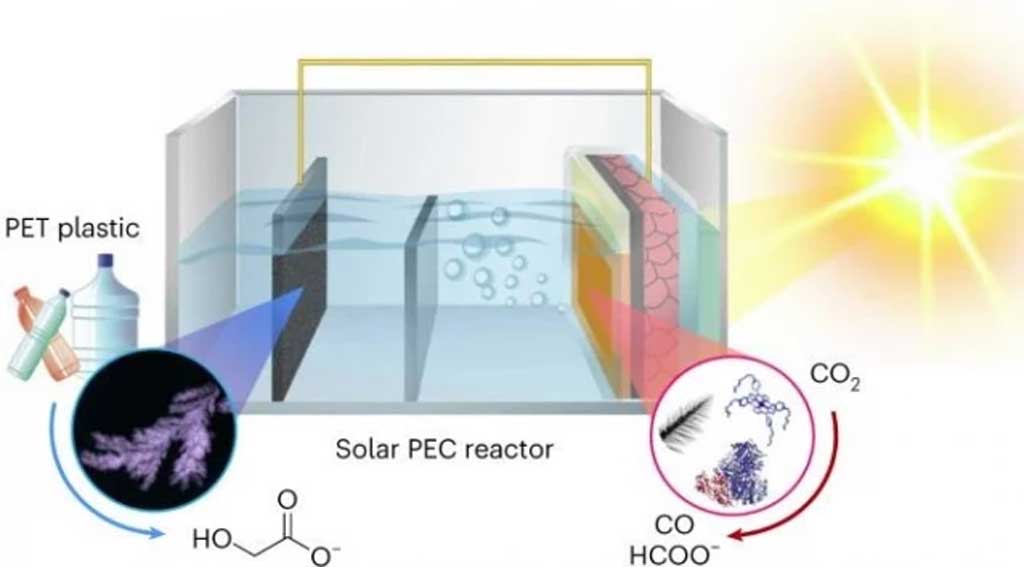The researchers developed the system, which can convert two waste streams into two chemical products at the same time — the first time this has been achieved in a solar-powered reactor.
The reactor converts the carbon dioxide (CO2) and plastics into different products that are useful in a range of industries. In tests, CO2 was converted into syngas, a key building block for sustainable liquid fuels, and plastic bottles were converted into glycolic acid, which is widely used in the cosmetics industry.
Researchers explained that the system can easily be tuned to produce different products by changing the type of catalyst used in the reactor.
“Converting waste into something useful using solar energy is a major goal of our research,” said Professor Erwin Reisner from the Yusuf Hamied Department of Chemistry, the paper’s senior author.
He recalled that plastic pollution is a huge problem worldwide, and often, many of the plastics we throw into recycling bins are incinerated or end up in landfill.
“A solar-driven technology that could help to address plastic pollution and greenhouse gases at the same time could be a game-changer in the development of a circular economy,” said Subhajit Bhattacharjee, the paper’s co-first author.
The researchers developed an integrated reactor with two separate compartments: one for plastic, and one for greenhouse gases. The reactor uses a light absorber based on perovskite — a promising alternative to silicon for next-generation solar cells.
Tests of the reactor under normal temperature and pressure conditions showed that the reactor could efficiently convert PET plastic bottles and CO2 into different carbon-based fuels such as CO, syngas or formate, in addition to glycolic acid.
The Cambridge-developed reactor produced these products at a rate that is also much higher than conventional photocatalytic CO2 reduction processes.
“What’s so special about this system is the versatility and tuneability — we’re making fairly simple carbon-based molecules right now, but in future, we could be able to tune the system to make far more complex products, just by changing the catalyst,” said Bhattacharjee.
“Developing a circular economy, where we make useful things from waste instead of throwing it into landfill, is vital if we’re going to meaningfully address the climate crisis and protect the natural world,” said Reisner. “And powering these solutions using the Sun means that we’re doing it cleanly and sustainably.”
pll/jcm/lpn










